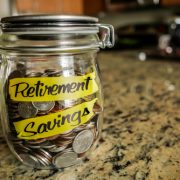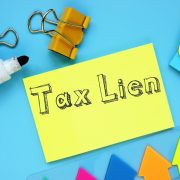Lesser-Known Factors with Tax Lien Investing in a Self-Directed IRA
For many people, the basics of Self-Directed IRA investing are easy enough to understand. You can use a Self-Directed IRA to hold alternative asset classes like real estate, some types of precious metals, and…tax liens. But with tax liens, they might run into a hiccup. What does it mean to invest in a tax lien, after all? For many people, a tax lien is something to be afraid of, because it means that a lien has been placed on them. But understanding tax liens from an investment perspective will help you realize the full range of investments available to you when you invest in a Self-Directed IRA. Here’s what you need to know.
What is Tax Lien Investing in a Self-Directed IRA?
First, let’s cover the basics. The government collects taxes from you, sure. But in some cases, it can collect profits for you—that’s what happens with Tax Lien Investing. With a Self-Directed IRA, there’s the possibility of purchasing a tax lien, which puts you in the ownership position while the local tax collector collects the profits on the behalf of the Self-Directed IRA.
A tax lien occurs when a borrower is unable to make payments on their property taxes, which means that the local government may place a lien on their house. This creates a tax debt situation. As a tax lien investor, your role would be to purchase this tax debt, which gets the government paid. You then own the debt—which puts you in the position of collecting on the tax debt when it’s paid off. In some cases, you may even be able to be “in first position” if there is a first mortgage or deed of trust currently on the property. This gives you a tremendous amount of power in investing, as well as different options for making good on your investment.
The Benefits of Tax Lien Investing
What do you need to know about Tax Lien Investing and why it works? There is a good chance that using tax liens means you can collect higher than normal interest rates, which is especially appealing in times of high inflation. That means that you can use the existing money within a Self-Directed IRA to collect passive income in that IRA while doing minimal work and effort. However, it does mean that you need to know the ropes of Tax Lien Investing, as well as the fact that there may be maximum rates depending on which state you’re in. In real estate and tax liens, these two investment types can be more subject to the rules of local investing and regulations, which means you’ll want to do your homework.
Lesser-Known Factors when Tax Lien Investing
In the event of a foreclosure, an investor can potentially sell the property for the profit or hold the property for the income generated through rent. This gives investors more options for what to do in the event of a foreclosure and means that Tax Lien Investing can feel like a flow chart at times. Understanding this quirk of Tax Lien Investing means better understanding the various options available to you. The better you understand the local real estate market and the local tax situation, the better you’ll be able to have confidence in what you’re doing.
Tax Lien Investing is a unique form of investing, and it’s not something that people often jump into. It requires research and know-how. To learn more, visit our page on Tax Lien Investing. Interested in learning more about Self-Directed IRAs? Contact American IRA, LLC at 866-7500-IRA (472) for a free consultation. Download our free guides or visit us online at www.AmericanIRA.com.









